I am using facet_wrap and was also able to plot the secondary y-axis. However the labels are not getting plotted near the axis, rather they are plotted very far. I realise it all will get resolved if I understand how to manipulate the coordinate system of the gtable (t,b,l,r) of the grobs. Could someone explain how and what they actually depict - t:r = c(4,8,4,4) means what.
There are many links for secondary yaxis with ggplot, however when nrow/ncol is more than 1, they fails. So please teach me the basics of grid geometry and grobs location management.
Edit : the Code
this is the final code written by me :
library(ggplot2)
library(gtable)
library(grid)
library(data.table)
library(scales)
# Data
diamonds$cut <- sample(letters[1:13], nrow(diamonds), replace = TRUE)
dt.diamonds <- as.data.table(diamonds)
d1 <- dt.diamonds[,list(revenue = sum(price),
stones = length(price)),
by=c("clarity", "cut")]
setkey(d1, clarity, cut)
# The facet_wrap plots
p1 <- ggplot(d1, aes(x = clarity, y = revenue, fill = cut)) +
geom_bar(stat = "identity") +
labs(x = "clarity", y = "revenue") +
facet_wrap( ~ cut) +
scale_y_continuous(labels = dollar, expand = c(0, 0)) +
theme(axis.text.x = element_text(angle = 90, hjust = 1),
axis.text.y = element_text(colour = "#4B92DB"),
legend.position = "bottom")
p2 <- ggplot(d1, aes(x = clarity, y = stones, colour = "red")) +
geom_point(size = 4) +
labs(x = "", y = "number of stones") + expand_limits(y = 0) +
scale_y_continuous(labels = comma, expand = c(0, 0)) +
scale_colour_manual(name = '', values = c("red", "green"),
labels = c("Number of Stones"))+
facet_wrap( ~ cut) +
theme(axis.text.y = element_text(colour = "red")) +
theme(panel.background = element_rect(fill = NA),
panel.grid.major = element_blank(),
panel.grid.minor = element_blank(),
panel.border = element_rect(fill = NA, colour = "grey50"),
legend.position = "bottom")
# Get the ggplot grobs
xx <- ggplot_build(p1)
g1 <- ggplot_gtable(xx)
yy <- ggplot_build(p2)
g2 <- ggplot_gtable(yy)
nrow = length(unique(xx$panel$layout$ROW))
ncol = length(unique(xx$panel$layout$COL))
npanel = length(xx$panel$layout$PANEL)
pp <- c(subset(g1$layout, grepl("panel", g1$layout$name), se = t:r))
g <- gtable_add_grob(g1, g2$grobs[grepl("panel", g1$layout$name)],
pp$t, pp$l, pp$b, pp$l)
hinvert_title_grob <- function(grob){
widths <- grob$widths
grob$widths[1] <- widths[3]
grob$widths[3] <- widths[1]
grob$vp[[1]]$layout$widths[1] <- widths[3]
grob$vp[[1]]$layout$widths[3] <- widths[1]
grob$children[[1]]$hjust <- 1 - grob$children[[1]]$hjust
grob$children[[1]]$vjust <- 1 - grob$children[[1]]$vjust
grob$children[[1]]$x <- unit(1, "npc") - grob$children[[1]]$x
grob
}
j = 1
k = 0
for(i in 1:npanel){
if ((i %% ncol == 0) || (i == npanel)){
k = k + 1
index <- which(g2$layout$name == "axis_l-1") # Which grob
yaxis <- g2$grobs[[index]] # Extract the grob
ticks <- yaxis$children[[2]]
ticks$widths <- rev(ticks$widths)
ticks$grobs <- rev(ticks$grobs)
ticks$grobs[[1]]$x <- ticks$grobs[[1]]$x - unit(1, "npc")
ticks$grobs[[2]] <- hinvert_title_grob(ticks$grobs[[2]])
yaxis$children[[2]] <- ticks
if (k == 1)#to ensure just once d secondary axisis printed
g <- gtable_add_cols(g,g2$widths[g2$layout[index,]$l],
max(pp$r[j:i]))
g <- gtable_add_grob(g,yaxis,max(pp$t[j:i]),max(pp$r[j:i])+1,
max(pp$b[j:i])
, max(pp$r[j:i]) + 1, clip = "off", name = "2ndaxis")
j = i + 1
}
}
# inserts the label for 2nd y-axis
loc_1st_yaxis_label <- c(subset(g$layout, grepl("ylab", g$layout$name), se
= t:r))
loc_2nd_yaxis_max_r <- c(subset(g$layout, grepl("2ndaxis", g$layout$name),
se = t:r))
zz <- max(loc_2nd_yaxis_max_r$r)+1
loc_1st_yaxis_label$l <- zz
loc_1st_yaxis_label$r <- zz
index <- which(g2$layout$name == "ylab")
ylab <- g2$grobs[[index]] # Extract that grob
ylab <- hinvert_title_grob(ylab)
ylab$children[[1]]$rot <- ylab$children[[1]]$rot + 180
g <- gtable_add_grob(g, ylab, loc_1st_yaxis_label$t, loc_1st_yaxis_label$l
, loc_1st_yaxis_label$b, loc_1st_yaxis_label$r
, clip = "off", name = "2ndylab")
grid.draw(g)
@Sandy here is the code and its output
only trouble was that in the last row the secondary y-axis labels are inside the panels.I tried to solve this but not able to
